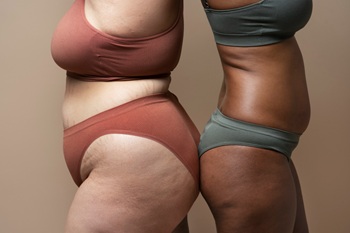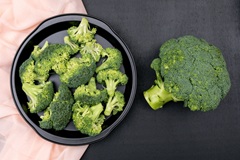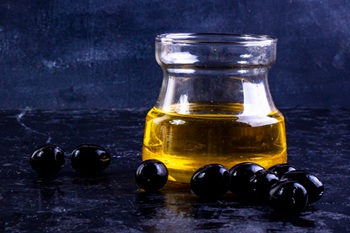How to Prevent and Treat Stretch Marks
Stretch marks, clinically referred to as striae distensae, are a widespread skin condition affecting individuals of all ages, genders, and skin types. Although they pose no direct health risks, stretch marks can significantly influence self-esteem and body image. They often manifest during life stages by rapid changes in body size, such as puberty, pregnancy, or fluctuations in weight. Despite their common occurrence, there are many misconceptions about the causes and treatments of stretch marks.
This article explores the science behind stretch marks, their causes, strategies for prevention, and the latest advancements in treatment options.
What Are Stretch Marks?
Stretch marks are elongated, narrow streaks or lines that form on the skin when the middle skin layer (dermis) stretches beyond its elastic capacity. Initially, they appear red, purple, or dark brown lines (striae rubrae) and gradually fade to lighter, silvery shades (striae albae).
Common areas for stretch marks include:
- Abdomen
- Thighs
- Hips
- Breasts
- Upper arms
- Lower back
Stretch marks do not indicate an underlying health issue, but they are a visible sign of structural changes in the skin.
What Causes Stretch Marks?
Stretch marks are primarily caused by the tearing of collagen and elastin fibers in the skin due to mechanical stress. Hormonal changes and genetic predisposition exacerbate the tearing. Below are the most common causes:
Hormonal Influences
Hormones such as glucocorticoids (produced by the adrenal glands) can weaken the skin's collagen and elastin matrix. Elevated glucocorticoid levels are often seen during pregnancy, adolescence, and certain medical conditions like Cushing's syndrome.
Rapid Growth or Weight Changes
- Pregnancy: Up to 90% of pregnant women develop stretch marks, particularly during the third trimester, due to the rapid expansion of the abdomen and hormonal shifts (1).
- Puberty: Adolescents often experience stretch marks as their bodies rapidly grow during puberty.
- Weight Fluctuations: Gaining or losing weight quickly can overstretch the skin, leading to stretch marks.
Genetic Factors
You are more likely to develop stretch marks if your parents or siblings have them. Genetic predisposition influences the skin's elasticity and resilience.
Medical Conditions and Medications
Certain conditions, like Marfan syndrome or prolonged use of corticosteroids, can weaken the skin’s connective tissues, making stretch marks more likely.
Can Stretch Marks be Prevented?
While not all stretch marks can be avoided, some strategies can help reduce their likelihood:
Hydration and Nutrition
Keeping your skin well-moisturized can improve its elasticity. Ingredients like cocoa butter, shea butter, and hyaluronic acid are beneficial for maintaining hydration. A diet rich in vitamins A, C, and E, zinc and omega-3 fatty acids can support collagen production and overall skin health.
Gradual Weight Changes
Avoiding rapid weight gain or loss can help minimise mechanical stress on the skin.
Topical Creams During Pregnancy
Applying specially formulated creams containing Centella asiatica, hyaluronic acid, or almond oil during pregnancy may reduce the severity of stretch marks (2).
Massage Therapy
Regular massaging of vulnerable areas improves circulation and elasticity, potentially reducing the risk of stretch marks.
Treatment Options for Stretch Marks
Treating stretch marks can be challenging, and no method guarantees complete removal. However, a combination of treatments can significantly improve their appearance.
Topical Treatments
- Retinoids: Prescription-strength retinoids like tretinoin can help rebuild collagen, improving the texture and pigmentation of stretch marks. Retinoids work best on newly formed stretch marks and are not suitable for use during pregnancy (3).
- Hyaluronic Acid: This popular skincare ingredient hydrates and plumps the skin, reducing the visibility of fine lines and stretch marks.
- Vitamin C: Known for its antioxidant properties, it can boost collagen synthesis and lighten discoloration.
Microdermabrasion
This minimally invasive procedure involves exfoliating the skin with tiny crystals, removing the outermost layer and promoting new skin growth. Microdermabrasion is most effective for older, silvery stretch marks.
Laser Therapy
Laser treatments are among the most advanced options for stretch mark reduction:
- Pulsed Dye Laser (PDL): Targets blood vessels in newer stretch marks, reducing redness and promoting collagen remodeling.
- Fractional Lasers: Penetrate deeper layers of the skin to stimulate collagen and elastin production, improving the texture of new and old stretch marks (4).
Microneedling
Microneedling uses tiny needles to create micro-injuries in the skin, encouraging natural healing and collagen production. Research shows that microneedling can significantly improve the appearance of stretch marks over time (5).
Chemical Peels
Peels with glycolic acid or trichloroacetic acid (TCA) can improve skin texture and pigmentation by encouraging cell turnover.
Radiofrequency Therapy
Radiofrequency devices deliver heat to deeper layers of the skin, stimulating collagen and tightening skin tissue.
Do home remedies work?
Many people turn to natural remedies, such as coconut oil, aloe vera, and almond oil, to improve the appearance of stretch marks. While these remedies can moisturise and soothe the skin, no scientific evidence supports their effectiveness in reducing stretch marks significantly (6).
What is the emotional impact of stretch marks?
Stretch marks can have a psychological impact, especially for self-conscious individuals. Normalising stretch marks as a natural and common occurrence can help reduce stigma and promote body positivity. Social media movements and public figures embracing stretch marks have contributed to a broader cultural acceptance.
Conclusion
Stretch marks are a natural occurrence for many individuals, and while they cannot always be avoided, various treatment options are available to reduce their visibility. Advances in dermatological treatments, such as laser therapies and microneedling, show promising results, while simple lifestyle modifications like maintaining proper hydration and managing weight gradually can decrease their likelihood. Most importantly, accepting stretch marks as a normal part of the human experience can significantly enhance self-confidence and promote body positivity. If stretch marks are a source of considerable distress, seeking advice from a dermatologist can provide tailored recommendations for effective treatment solutions.
Edited by: Damilola Elewa
Additional read:








Comments (0)